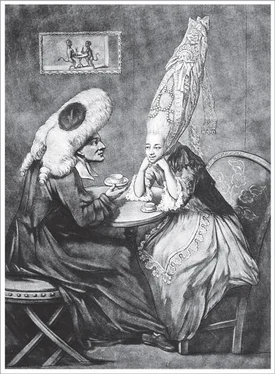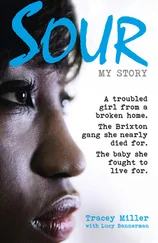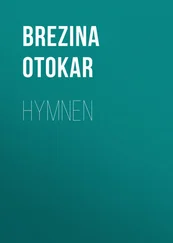Bill Bryson - At Home
Здесь есть возможность читать онлайн «Bill Bryson - At Home» весь текст электронной книги совершенно бесплатно (целиком полную версию без сокращений). В некоторых случаях можно слушать аудио, скачать через торрент в формате fb2 и присутствует краткое содержание. Жанр: Старинная литература, на английском языке. Описание произведения, (предисловие) а так же отзывы посетителей доступны на портале библиотеки ЛибКат.
- Название:At Home
- Автор:
- Жанр:
- Год:неизвестен
- ISBN:нет данных
- Рейтинг книги:4 / 5. Голосов: 1
-
Избранное:Добавить в избранное
- Отзывы:
-
Ваша оценка:
- 80
- 1
- 2
- 3
- 4
- 5
At Home: краткое содержание, описание и аннотация
Предлагаем к чтению аннотацию, описание, краткое содержание или предисловие (зависит от того, что написал сам автор книги «At Home»). Если вы не нашли необходимую информацию о книге — напишите в комментариях, мы постараемся отыскать её.
At Home — читать онлайн бесплатно полную книгу (весь текст) целиком
Ниже представлен текст книги, разбитый по страницам. Система сохранения места последней прочитанной страницы, позволяет с удобством читать онлайн бесплатно книгу «At Home», без необходимости каждый раз заново искать на чём Вы остановились. Поставьте закладку, и сможете в любой момент перейти на страницу, на которой закончили чтение.
Интервал:
Закладка:
Nowhere was entirely safe, it seems. Even Chiswick House, a landmark building by any measure, was nearly lost. For a time it was a lunatic asylum, but by the 1950s it was empty and listed for demolition. Fortunately, enough sense prevailed to save it, and it is now in the safe care of English Heritage, a public body. The National Trust rescued some two hundred other houses over the course of the century, and a few survived by turning themselves into tourist attractions—not always entirely smoothly at first. A grandmother at one stately home, Simon Jenkins relates in England’s Thousand Best Houses , refused to leave one of the rooms whenever horse racing was on the television. “She was voted the best exhibit,” Jenkins adds. Many other large houses found new lives as schools, clinics, or other institutions. Sir William Harcourt’s Nuneham Park spent much of the twentieth century as a training center for the Royal Air Force. It is now a religious retreat.
Hundreds more, however, were unceremoniously whisked away. By the 1950s, the peak period of destruction, stately homes were disappearing at the rate of about two a week. Exactly how many great houses went altogether is unknown. In 1974, the Victoria and Albert Museum in London staged a celebrated exhibition, “The Destruction of the Country House,” in which it surveyed the enormous loss of stately homes. Altogether the curators, Marcus Binney and John Harris, counted 1,116 great houses lost in the previous century, but further research raised that number to 1,600 even before the exhibition was over, and the figure now is generally put at about 2,000—a painfully substantial number, bearing in mind that these were some of the handsomest, jauntiest, most striking, ambitious, influential, and patently cherishable residences ever erected on the planet.
III
So that was the situation for Mr. Marsham and his century as they headed jointly toward their closing years. From the perspective of domesticity, there has never been a more interesting or eventful time. Private life was completely transformed in the nineteenth century—socially, intellectually, technologically, hygienically, sartorially, sexually, and in almost any other respect that could be made into an adverb. Mr. Marsham was born (in 1822) into a world that was still essentially medieval—a place of candlelight, medicinal leeches, travel at walking pace, news from afar that was always weeks or months old—and lived to see the introduction of one marvel after another: steamships and speeding trains, telegraphy, photography, anesthesia, indoor plumbing, gas lighting, antisepsis in medicine, refrigeration, telephones, electric lights, recorded music, cars and planes, skyscrapers, motion pictures, radio, and literally tens of thousands of tiny things more, from mass-produced bars of soap to push-along lawn mowers.
It is almost impossible to conceive just how much radical day-to-day change people were exposed to in the nineteenth century, particularly in the second half. Even something as elemental as the weekend was brand-new. The term is not recorded in English before 1879, when it appears in the magazine Notes & Queries in the sentence: “In Staffordshire, if a person leaves home at the end of his week’s work on the Saturday afternoon to spend the evening of Saturday and the following Sunday with friends at a distance, he is said to be spending his weekend at So-and-so.” Even then, clearly, it only signified Saturday afternoon and Sunday, and then only for certain people. Not until the 1890s did it become universally understood, if not yet universally enjoyed, but an entitlement to relaxation was unquestionably on its way.
The irony in all this is that just as the world was getting more agreeable for most people—more brilliantly lit, more reliably plumbed, more leisured and pampered and gaudily entertaining—it was quietly falling apart for the likes of Mr. Marsham. The agricultural crisis that began in the 1870s and ran on almost indefinitely was as palpably challenging to country parsons as it was to the wealthy landowners on whom they depended, and it was doubly difficult for those whose family wealth was tied to the land, as Mr. Marsham’s was.
By 1900, a parson’s earnings were much less than half in real terms what they had been fifty years before. Crockford’s Clerical Directory of 1903 bleakly recorded that a “considerable section” of the clergy now lived at a level of “bare subsistence.” A Reverend F. J. Bleasby, it further noted, had made 470 unsuccessful applications for a curacy, and finally, in humbling defeat, had entered a workhouse. The well-off parson was resoundingly and irremediably a thing of the past.
The rambling parsonages that had once made the life of a country clergyman commodious and agreeable were now for many just vast and leaky burdens. Many twentieth-century clergy, coming from more modest backgrounds and struggling on much reduced incomes, couldn’t afford to maintain such spacious properties. A Mrs. Lucy Burnett, wife of a country vicar in Yorkshire, plaintively explained to a church commission in 1933 just how big was the vicarage that she had to manage: “If you played a brass band in my kitchen I don’t think you could hear it in the drawing room,” she said. The responsibility for interior improvements fell to the incumbents, but increasingly they were too impoverished to effect any. “Many a parsonage has passed twenty, thirty, even fifty years without any redecoration at all,” Alan Savidge wrote in a history of parsonages in 1964.
The simplest solution for the church was to sell off the troublesome parsonages, and to build something smaller nearby. The Church of England Commissioners, the officials in charge of these disposals, were not always the most astute of businesspeople, it must be said. Anthony Jennings, in The Old Rectory (2009), notes how in 1983 they sold just over three hundred parsonages at an average price of £64,000, but spent an average of £76,000 on building much inferior replacements.
Of the thirteen thousand parsonages that existed in 1900, just nine hundred are still in Church of England ownership today. Our Old Rectory was sold into private hands in 1978. (I don’t know for how much.) Its history as a rectory lasted 127 years, during which time it was home to eight clergy. Curiously, all seven later rectors stayed longer in the house than the shadowy figure who built it. Thomas John Gordon Marsham departed in 1861, after just ten years, to take up a new post as rector of Saxlingham, a position of almost exactly equal obscurity in a village twenty miles to the north, near the sea.
Why he built himself such a substantial house is a question that can now never be answered. Perhaps he hoped to impress some delightful young woman of his acquaintance, but she declined him and married another. Perhaps she did choose him but died before they could wed. Both outcomes were common enough in the mid-nineteenth century, and either would explain some of the rectory’s design mysteries, such as the presence of a nursery and the vague femininity of the plum room, though nothing we can suggest can now ever be more than a guess. All that can be said is that whatever happiness he found in life, it was not within the bounds of marriage.
We may at least hope that his relationship with his devoted housekeeper Miss Worm had some measure of warmth and affection, however awkwardly expressed. It was almost certainly the longest relationship of either of their lives. When Miss Worm died in 1899 at the age of seventy-six, she had been Mr. Marsham’s housekeeper for over half a century. In that same year the Marsham family estate at Stratton Strawless was sold in fifteen lots, presumably because no one could be found to buy it whole. The sale marked the end of four hundred years of prominence for the Marsham family in the county. Today all that remains as a reminder of that is a pub called the Marsham Arms in the nearby village of Hevingham.
Читать дальшеИнтервал:
Закладка:
Похожие книги на «At Home»
Представляем Вашему вниманию похожие книги на «At Home» списком для выбора. Мы отобрали схожую по названию и смыслу литературу в надежде предоставить читателям больше вариантов отыскать новые, интересные, ещё непрочитанные произведения.
Обсуждение, отзывы о книге «At Home» и просто собственные мнения читателей. Оставьте ваши комментарии, напишите, что Вы думаете о произведении, его смысле или главных героях. Укажите что конкретно понравилось, а что нет, и почему Вы так считаете.












